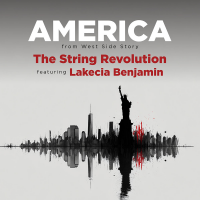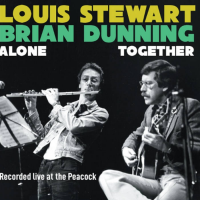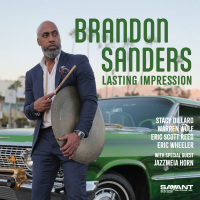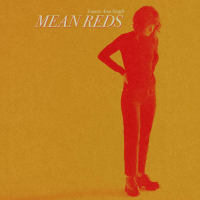Home » Jazz Articles » Multiple Reviews » Between The Lines Turns Five, Part 1-2
Between The Lines Turns Five, Part 1-2
The label Between The Lines was born on November 26, 1998 as Deutsche Structured Finance organised a double concert at the Sudbahnhof in Frankfurt, entitled "between the lines". The programme featured a world premiere of the Road Movie suite by Michel Wintsch starring guest performer Gerry Hemingway and a composition by Franz Koglmann inspired by Jean Cocteau, "Make Believe". But a one-off event was not enough for financial services provider Deutsche Structured Finance and its managing director Paul Steinhardt. Shortly after this concert, the CD label was born.
The music between improvisation and composition is modern but not bound to any one ideology. These qualities and its cross references to the visual arts, film, literature and post-minimalism ( Icebreaker ) seems to make it significant for the artistic situation of our time, and is reflected in Between The Lines productions. As Konrad Heidkamp in Die Zeit said, "Shades and nuances at interfaces are as necessary as stark dissonances and beautiful melodies, but never random, always precise in its in-between-ness."
Franz Koglmann is the artistic director of the label, its first and frequent contributor and has attracted a group of top notch musicians that appear in various configurations, both as leaders and sidemen: Tony Coe, Peter Herbert, James Emery, Steve Lacy, Bill Dixon, Tom Varner and Paul Bley.
As a phrase, the usual meaning of "between the lines" is to infer a deeper, more subtle meaning from some writing that on its surface might seem obvious. In this case, though, the phrase's musical meaning applies not only to the lines of the musical staff, and hence relating to pitch, but also, and more importantly, to style and technique. So, there are some unorthodox instruments used, and some orthodox ones played in an unorthodox manner. But that is really a secondary matter. The most important thing is the collision between composition and improvisation, between American and European artistic esthetics, between highbrow and lowbrow, between the 'popular' and the 'artistic', between Jazz music and Classical music. Furthermore, this Art represents a fusion between music, theater, literature, philosophy, politics and the Fine Arts, to name a few fields. Koglmann is relentless is putting out music that refuses to be labeled, while demanding to be listened to closely.
A review of anything is as much about the reviewer as that which is reviewed. With music we struggle to find the right adjectives to describe sound. James Emery quotes Debussy: "Music starts where words end." But readers also want to know, "Did he or she LIKE it?", presuming that the reviewer is more knowledgeable, spends more time on it and cares more (all of which might or might not be true!.) Purchasing decisions by one person is many times based on another's reactions to the work at hand.
I bring this up because with between the lines , labels can be useful as well as dangerous, guiding lights as well binding chains. And the primary label here is the word 'Jazz' itself. You are reading this at "All About Jazz", yet any attempt I have read anywhere to define Jazz has failed for one reason or another. Now, I don't want to get into the Wynton/Eric Nisenson, white/black, blues/swing arguments, but nevertheless there is something that we love to listen to that we call 'Jazz", so what is it? While you are thinking of a response, here is my definition: in the mind/body dialectic, Jazz for me sits on the body side. However, the best Jazz actively engages the mind while moving the body; its rhythm is horizontal rather than vertical (to use Gunther Schuller's terminology). If it does this, I can live without melody or harmony. Jazz is as much about emotion as about thought, one can hear Eric Dolphy thinking when he is blowing furiously. Jazz cannot exist for me without the feel of spontaneity, and even through-composed Ellington sounds spontaneous. I am sure all of you have one or two CDs in your collection that just do not excite you, no matter how 'new' the music is, and others that can be played over and over until you have them memorized, yet they make you smile every time.
When we talk about Jazz, many times its stylistic periods are used: ragtime, swing, bop, hard bop, mainstream, soul, funk, free. This range of style is a microcosm of the whole range of music itself, and Jazz, that undefineable thing, sits 'between the lines' of all these styles, constantly expanding and refusing to be pigeonholed. Also, one can easily see the whole history of harmony in Classical music being compressed by Jazz into one hundred years. Now along comes BTL where Koglmann and company says, "crack open Jazz at its far right edge, next to Classical music, spread it wide apart, making the stylistic range as wide as the whole of Jazz was before. We belong HERE!"
I found the 16 BTL discs fascinating, intriguing and engrossing music, some discs 'clearly' Jazz and others just as 'clearly' not. The production quality is top-notch, starting with the recording itself which when played through a good system will create real instruments in real space, down to the tryptich cardboard sleeves that have interesting art inside and out, that many times is put onto the CD so that one wants to put it into the slot just right so the design matches. There are quite a few loose note pages that are hiding in the sleeve of various discs. Of course the music must be able to stand by itself, but I always find it useful to read the composer's words about his own work.
If all this talk of 'dialectic', politics, artistic esthetics and philsophy seems eye-rollingly esoteric, then maybe this music is not for you, and I would certainly understand that. However, I would caution everyone against preconceptions, of automatically getting turned off, and let the sounds flow, and when it ends, decide if the last hour or so was well spent.
Before I go into the discs in chronological order, I want to mention five discs that just floored me, Jazz or not Jazz. Opium (btl 011) has some terrific playing by Steve Lacy, and Koglmann, but track three, "For Franz" written by Bill Dixon is 17 minutes of ecstatic playing and one of my all-time favorite cuts EVER. In The North (btl 026, reviewed in Part 2) with Andreas Willers and Paul Bley is just flat out beautiful and many times evokes 'northness' as well as my other favorite northern composer, Sibelius. Luminous Cycles (btl 015) by James Emery and his sextet can really swing almost viciously while British-American Blue (btl 007) with Tony Coe and Roger Kellaway is totally improvised on the spot, has almost no swing, but feels, of course, spontaneous. Lastly An Affair With Strauss (btl 006) is just outright cool with Coe again being outstanding, which is not to take away anything from the others.
My impression after going through the releases chronologically is a drift towards the composed, meaning the 'classical', culminating in Koglmann's Fear Death By Water. Of course there are exceptions ( In The North ), but they seem to prove the rule, and these will be dealt with in Part 2.
 Franz Koglmann
Franz Koglmann
Make Believe, Six musical scenes based Jean Cocteau's novel "Les enfants terribles"
btl 001
This is the kick-off disc of the label, and Koglmann has something to say. In the separate liner notes he is quoted, "My non-jazzy attitude is due to the fact that my ancestors were not cotton pickers from Misssisippi. It would disingenuous to exhibit my 'groove' in a finger-snapping manner." Koglmann himself quotes Cocteau: "The worst that can happen to a work of art is that people find to complain about in it." These quotes might seem purposefully argumentative but the music is anything but. Knowing the Cocteau novel is not necessary to appreciate the music, which is constantly falling in and out of a pulse as the instruments enter and depart. Coe is a standout, but he can do no wrong in my book anyway, here and on other discs. Koglmann also plays very well, and there were many times that I just could not decide if he was playing a flugelhorn or trumpet. Instrumentally, Herbert is a prime example of the new breed of bass players that are totally at ease when playing arco, and get a good sound with the bow. I was at a complete loss in picking out the composed sections versus the improvised ones, and since this feature of the 'new (European) Jazz' is a core one to the BTL label, this first disc hits the bullseye.
Personnel: Franz Koglmann (tpt flgh), Tony Coe (cl, b cl, ts), Tom Varner (fr hrn), Brad Shepik (g) and Peter Herbert (b)
 Michael Moore
Michael Moore
Monitor
btl 003
Hardly your normal 'Jazz' instrumentation, and the pieces are clearly built on idea cells that are passed around, sometimes obviously, other times not, creating soundscapes that shift and vary over the life of the track. The range of sounds produced by the trio is impressive, and there are quite a few times when a beautiful section arises out of the 'chaos' that preceeded it. I haven't the slightest idea how this music is notated. "Barium" is quite clearly through-composed (as noted in the notes) and is totally engrossing. The title track is also the longest and is quite organic, starting of with the scraping of the low cello strings that is answered by the keyolin which is "a two-string viola suspended over a three-octave keyboard, which 'fingers' the strings, and like a clavichord has touch-sensitive vibrato." It also gets a very weird sound which plays against the cello. The piece just flows and changes shapes, textures and sound constantly and I was fascinated in trying to imagine how the three players were getting these sounds. Once again, the distinction between the spontaneous and the composed is quite blurred. Hardly your mother's Jazz, but quite thrilling in its own way.
Personnel: Michael Moore (cl, b cl, as) with Cor Fuhler (p, keyolin and hammond organ)and Tristan Honsinger (cello)
 The Monoblue Quartet
The Monoblue Quartet
An Affair With Strauss
btl 006
Think Johann, not Richard, Strauss and Franz Schubert in a candle lit room playing cool chamber Jazz. Koglmann remarks in the notes that he was asked to write a 'Strauss programme' for the 100th anniversary of Johann Strauss the Younger, and he hesitated at first, but listened to "Fledermaus" and found a connection between Strauss and himself. This connection is immediately obvious, and the melancholy that Koglmann finds in the waltz and Jazz influences the whole record. Koglmann's trumpet and flugelhorn playing is quite exposed and is gorgeous. Coe, as I mentioned above has a tone that just wraps around you and caresses you. As an added attraction, he sings (quite well) in "Good Night Vienna" (which he dedicates to Ronnie Scott), accompanied by Hawaiian guitar and other sounds. Light a candle, turn out the lights, be with the one you love and enjoy this beautiful, surprisingly effective music. You might just find yourself dancing a waltz or, for that matter, crying.
Personnel: Franz Koglmann (tpt, flgh), Tony Coe (cl, ts, vcl!), Burkhard Stangl (g), Peter Herbert (b)
 Tony Coe and Roger Kellaway
Tony Coe and Roger Kellaway
British American Blue
btl 007
Kellaway tells the story of how he met Tony Coe: "I had a 'love theme' within the film that needed a beautiful, warm tenor sax sound. Nat (the musical contractor) hired Tony Coe." He then was taken to hear Coe and Derek Bailey (Kellaway's "Aton Webern of the guitar") in an avante-garde concert and the result of that was the desire to create this record of free-form playing. "Except for the 'Blues' (last track) all compositions began with NO point of view other than our mutual love of music, and having the opportunity to improvise together." I have always been in awe of players that can create something coherent without any pre-ordained structure or even planning. The music works very well, and the Blues ("The Burgundy Bruise") is almost anti-climactic since I got used to the non-structure and the 12-bar blues progression, no matter how much the guys went outside of it, almost felt like a straightjacket after hearing ten free-form tracks before it. This might have been the point of putting it at the end, but maybe not. I can't pick a favorite from the other tracks, they are each intriguing and play out in entirely different ways. For those who are not familiar with 'free' improvising, this disc might make the perfect introduction. Coe's clarinet is unearthly, and he and Kellaway have at times extreme ESP.
Personnel: Tony Coe, (C-clarinet) and Roger Kellaway (p)
 John Lindberg Ensemble
John Lindberg Ensemble
A Tree Frog Tonality
btl 008
Lindberg speaks of this music being the result of a long journey. Lindberg's bass is featured throughout, naturally, and he, like the other bassists gets a good arco sound. "Thanksgiving Suite", which is in three parts totalling almost nineteen minutes starts with a beautiful duet between sopranino and bass, then moves to a duet between arco bass (with various techniques) and free drums, while third part is a duet between trumpet and bass. This is transcendent music, on the melancholy, introspective side. "Four Fathers" maintains that mood, and then "Drifter" changes it with music that seduces the listener by drifting in and out of rhythm using a clear motive. The title piece is also the longest, starting with trumpet figures against a single note bass vamp and drums, moves to other unearthly trumpet sounds, and continues to develop with returning references to some sort of theme. Once again, I have no idea how this music is notated. One must give oneself over to it, be patient and give up any preconceptions and expectations and let the music just transport you, which it did to me.
Personnel: John Lindberg Ensemble (Lindberg (b), Wadada Leo Smith (tpt), Larry Ochs (sopranino, ts), Andrew Cyrille (d)
 Franz Koglmann
Franz Koglmann
Opium
btl 011.
This music was originally recorded in 1973, 1975, and 1976, and is mentioned in the notes to Make Believe (btl 001), along with the Cocteau quote mentioned earlier. Very clearly Jazz of the free-ish school, this music is invigorating, not for the faint hearted, and sounds just as fresh now, 30 years later. As I mentioned above, all else on the disc (rather unfairly, I guess) gets washed away by "For Franz", written by Bill Dixon. Silva is absolutely on fire, pulling terrifying sounds from his bass, constantly driving and threatening to blow out your speakers. Dixon plays an anguished solo, that is marked by distortion, which could come from old tapes. I was transfixed for seventeen minutes, and this track alone is worth the price of the disc. One must be thankful that this music has been reissued by Koglmann.
Personnel: Franz Koglmann (tpt, flgh), Steve Lacy (ss), Josef Traindl (tbn), Cesarius Alvim Botelho (b), Aldo Romano (d) (tracks 1,2); Kolgmann with Bill Dixon (tpt), Steve Horenstein (ts), Alan Silva (b), Walter M. Malli (cymbals) (track 3); Kolgmann and Lacy with Toni Michlmayr (b), Walter M. Malli (perc), Gerd Geier (electronics) (tracks 4-7)
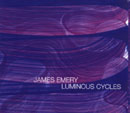 James Emery Sextet
James Emery Sextet
Luminous Cycles
btl 015
We are now within a more 'normal' Jazz instrumentation, and have drums providing swing and groove, and this music was very easy to groove to. The lines (melodies, motives) however, have kinky, quirky outlines and one can hear the 'modern' harmony straining to break out. Emery is a monster player, and effortlessly rips off amazing lines, like Django on speed. He is also quite a good composer and arranger, maintaining interest through contrast, since the 'harmony' is basically static or modal (at least to my ears.) The pieces on this disc, as opposed to much of the other music, could be played in a club and would get the audience's total attention and response. There is both a lot of humor underneath the 'seriousness' ("One Red Thread"), much beauty ("Beyond Words", "Exit To Nowhere", "Cardinal Points"). A few of the pieces seem linked ("Luminous Cycles", "En Rapport", "Across The Water"). This disc is probably the most accesible and definitely falls into what is normally called 'Jazz', but Emery's compositional range is wide.
Personnel: James Emery Sextet: Emery (acoustic g), Marty Ehrlich (as, ss, cl fl), Chris Speed (ts, cl), Drew Gress (b), Gerry Hemingway (d, glockenspiel), Kevin Norton (marimba, vibes, tympani, bowed tam-tam)
On to Part 2 ...
Tags
PREVIOUS / NEXT
Support All About Jazz
 All About Jazz has been a pillar of jazz since 1995, championing it as an art form and, more importantly, supporting the musicians who make it. Our enduring commitment has made "AAJ" one of the most culturally important websites of its kind, read by hundreds of thousands of fans, musicians and industry figures every month.
All About Jazz has been a pillar of jazz since 1995, championing it as an art form and, more importantly, supporting the musicians who make it. Our enduring commitment has made "AAJ" one of the most culturally important websites of its kind, read by hundreds of thousands of fans, musicians and industry figures every month.








